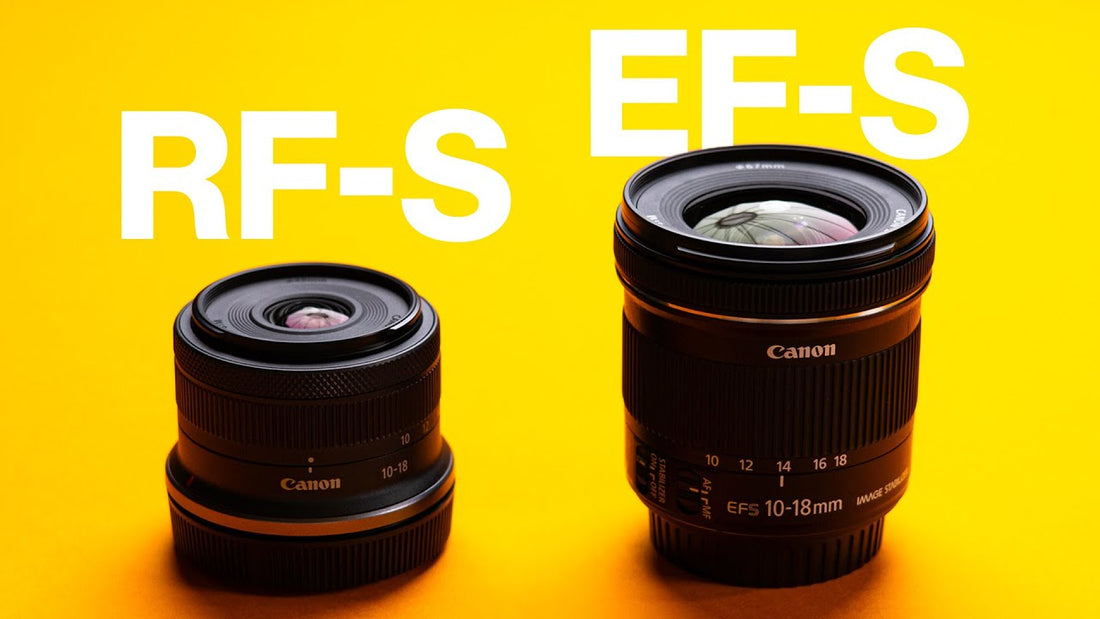
Canon RF-S 10-18mm vs EF-S 10-18mm | The Best Ultra-Wide Lens For Canon?
Watch my full video HERE
This post contains affiliate links. If you click and make a purchase, I may earn a commission at no extra cost to you. Thanks for your support!
When it comes to finding the perfect ultrawide lens for your crop-sensor RF-mount cameras like the Canon R50, R100, R10, and R7, the choice often boils down to two contenders: the newer RFS 10-18mm f/4.5-6.3 and the older EFS 10-18mm f/4.5-5.6 (with an adapter). Let’s dive into a detailed comparison to determine which lens deserves a spot in your camera bag.
Physical Differences
-
Size & Portability:
-
RF-S 10-18mm: Compact and lightweight at just 5.3 oz and slightly over 2 inches when retracted.
-
EF-S 10-18mm: Bulkier at 8.5 oz (with the RF adapter) and nearly 4 inches long.
-
-
Build Quality:
-
RF-S: Prioritizes portability with a plastic build; great for on-the-go photography.
-
EF-S: More robust but heavier, thanks to its larger form factor.
-
-
Convenience:
-
RF-S: Requires unlocking before use, reducing storage size.
-
EF-S: Includes physical switches for autofocus/manual focus and stabilization, offering quick adjustments.
-
Technical Specs
-
Aperture Range:
-
RF-S: f/4.5-6.3; slightly slower at 18mm, but not a significant drawback.
-
EF-S: f/4.5-5.6; offers better low-light performance at the telephoto end.
-
-
Autofocus:
-
Both feature STM motors for smooth, silent focusing, but the RF-S edges ahead in speed.
-
-
Image Stabilization:
-
Both provide up to 4 stops of stabilization—perfect for handheld shots and video.
-
-
Filter Thread Size:
-
RF-S: 49mm.
-
EF-S: 67mm.
-
-
Macro Abilities:
-
RF-S: Exceptional close focus; subjects can be as close as the glass element.
-
EF-S: Impressive but not as extreme as the RFS.
-
Image Quality
Sharpness
-
RF-S:
-
Center: Sharp wide open; stopping down doesn’t improve much.
-
Corners: Sharpen up by f/8 but soften at f/11.
-
-
EF-S:
-
Center: Sharp wide open; peaks at f/8.
-
Corners: Softer and more distorted, especially when stopped down.
-
Vignetting
-
RF-S: Slightly more pronounced but easily correctable in post.
-
EF-S: Minimal and less noticeable.
Flaring
-
Both lenses handle flaring moderately well, with the RF-S showing slight improvements over the EF-S.
Recommendations
-
Choose the RF-S 10-18mm if:
-
You prioritize portability and don’t want to bother with an adapter.
-
Close-focus capability is a must for your creative needs.
-
You’re buying new for an RF-mount camera.
-
-
Stick with the EF-S 10-18mm if:
-
You already own it and don’t need extreme close-focus or lighter weight.
-
Final Verdict
The RFS 10-18mm emerges as the winner for RF-mount cameras, offering better portability, modern features, and improved sharpness. However, the EFS 10-18mm remains a solid performer, especially for those upgrading gradually to RF systems.
